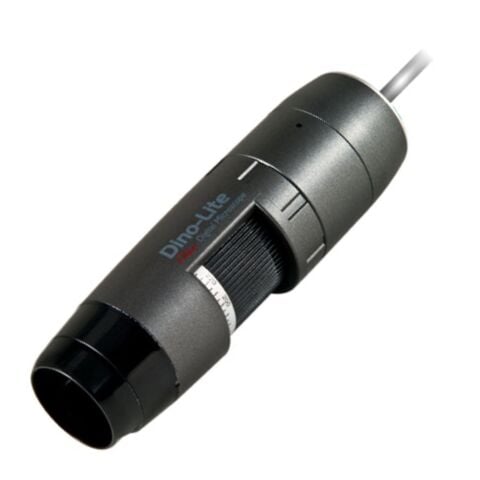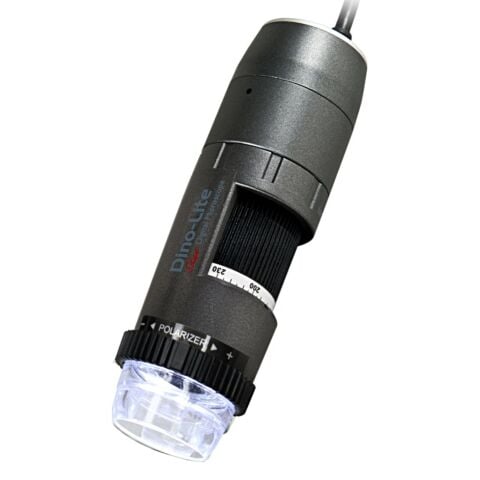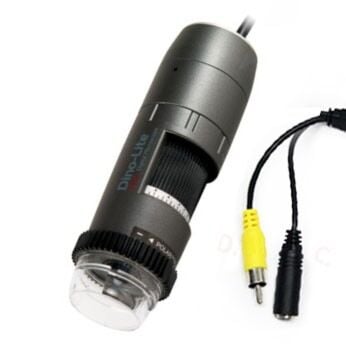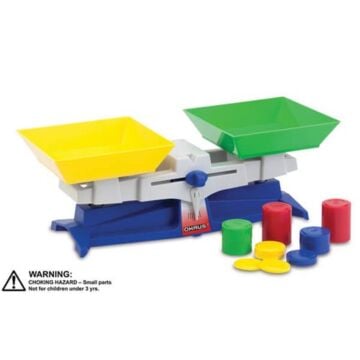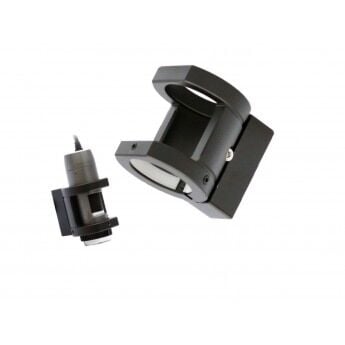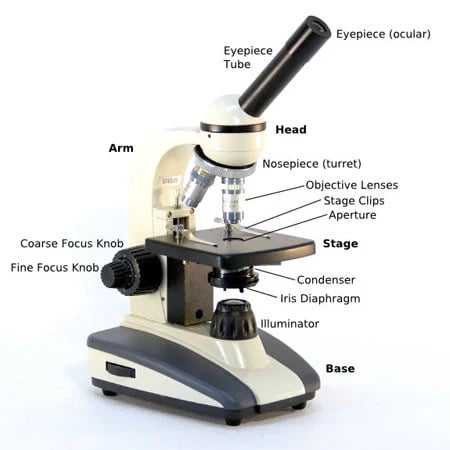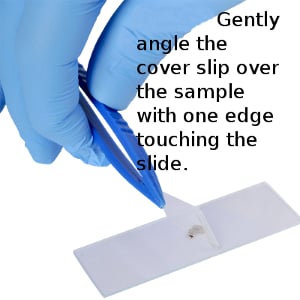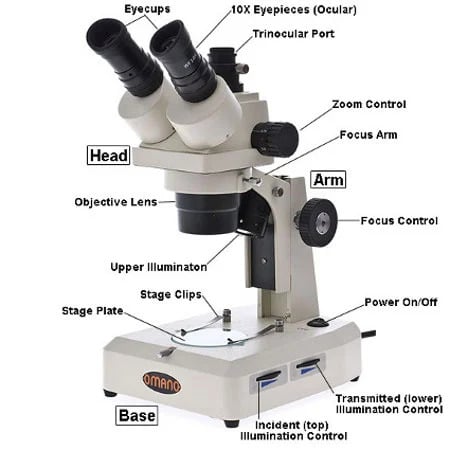The store will not work correctly in the case when cookies are disabled.
JavaScript seems to be disabled in your browser.
For the best experience on our site, be sure to turn on Javascript in your browser.
Microscopes
Dino-Lite
State-of-the-art 1.3MP color imaging sensor
iOS (iPad, iPhone) and Android OS compatible
Flexible Lighting Control (FLC)
5x-140x zoom magnification
Longer Working Distance (30mm @ 140X)
4 UV (400nm) & 4 White LED lights
Automatic Magnification Readouts (AMR)
PC, MAC and UVC compatible
USB 2.0 Output (or Wifi with optional WF-20)
Recommended for professional use
Dino-Lite
State-of-the-art 1.3MP color imaging sensor
iOS (iPad, iPhone) and Android OS compatible
Flexible Lighting Control (FLC)
State-of-the-art imaging sensor
390X-475X High-range magnification
Automatic Magnification Readouts (AMR)
Scroll lock to fix magnification
1.3 megapixel resolution
Built-in adjustable polarization ring
USB 2.0 or WiFi with optional WF-20 adapter
Recommended for professional use
Dino-Lite
State-of-the-art 5.0MP color imaging sensor
700X-900X High-range magnification
Automatic Magnification Readouts
Built-in coaxial illumination
USB 3.0 output (45 FPS @ 1280 x 960 resolution)
Aluminum alloy casing for protection
8 LEDs with Flexible LED Control (FLC)
USB 3.0-capable PC / MAC is required
Not compatible with WF-10 WiFi Adapter
Best Seller
Dino-Lite
New state-of-the-art 1.3MP imaging sensor
10x-140x full-range zoom magnification
Built-in adjustable polarizer ring
Aluminum alloy casing for industrial protection
Automatic Magnification Readout (AMR)
Long Working Distance (LWD)
PC/MAC Compatible
Flexible LED Control (FLC)
USB 2.0
Recommended for professional use
Dino-Lite
Edge Series with latest sensor technology
10x-50x Dual-focus Variable magnification
High speed 60 FPS video direct to HDMI monitor
HD 1280x720 Output Resolution
Built-in adjustable polarization ring
Aluminum alloy casing for protection
LED on/off with MicroTouch
Recommended for professional use
Dino-Lite
State-of-the-art 1.3MP color imaging sensor
iOS (iPad, iPhone) and Android OS compatible
Flexible Lighting Control (FLC)
State-of-the-art imaging sensor
500X-550X High-range magnification
Automatic Magnification Readouts (AMR)
Scroll lock to fix magnification
1.3 megapixel resolution
USB 2.0 or WiFi with optional WF-20 adapter
Recommended for professional use
Dino-Lite
State-of-the-art 1.3MP color imaging sensor
Extended Depth of Field (EDOF) for vertical profiling
Automatic Magnification Readout (AMR)
Extended Dynamic Range (EDR) to reduce glare
Aluminum Alloy casing for industrial protection
20x-220x full-range zoom magnification
Built-in adjustable polarization ring
EDR & EDOF are Not Mac Compatible
USB 2.0 output (or WiFi with WF-10 accessory adapter)
Recommended for professional use
Dino-Lite
Full zoom 10x~220x Variable magnification
8 Low Infrared wavelength (780nm) LEDs
State-of-the-art 1.3MP color imaging sensor
Software-controlled illumination
Measuring software with calibration
Interchangeable nozzles
PC/Mac compatible
Magnification scroll lock
USB 2.0 Output
Recommended for professional use
Dino-Lite
10x-50x, 220x magnification
Stroboscope @ 60 Hz
60 frame-per-second refresh rate
State-of-the-art 640 x 480 color imaging sensor
Software-controlled illumination
Interchangeable nozzles
Magnification scroll lock
Windows PC only
USB 2.0 Output
Recommended for professional use
Dino-Lite
20x ~ 220x Variable magnification
960 x 480 Resolution @ 30 FPS
TV/Analog connection
Polarization
No PC required
Recommended for professional use
Education Center
A high power or compound microscope achieves higher levels of magnification than a
stereo or low power microscope. It is used to view smaller specimens such as cell structures
which cannot be seen at lower levels of magnification.
May 18, 2012
Before you start building your slides, make sure you have everything you will need, including slides, cover slips, droppers or pipets and any chemicals or stains you plan to use.
May 22, 2012
A low power or stereo microscope typically employs objective lenses of 50x or less. It is used to view specimens that are visible to the naked eye such as insects, crystals, circuit boards and coins.
A stereo microscope has three key parts:
May 18, 2012









